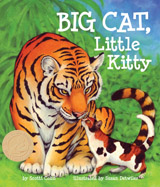Alignment to Standards for TX

| Grade | Number | Standard |
|---|---|---|
| 1 | 112.12 (b) (10) | organisms resemble their parents and have structures and processes that help them survive within their environments. |
| 1 | 112.12 (b) (10) (A) | external characteristics of an animal are related to where it lives, how it moves, and what it eats |
| 1 | 112.12 (b) (5) (A) | classify objects by observable properties of the materials from which they are made such as larger and smaller, heavier and lighter, shape, color, and texture |
| 1 | 113.3. (1.3) | The student understands the concepts of time and chronology. |
| 1 | 113.3. (1.5) | The student understands the purpose of maps and globes. |
| 2 | 112.13. (b) (10) (A) | compare how the physical characteristics and behaviors of animals help them meet their basic needs such as fins help fish move and balance in the water |
| 2 | 113.4. (2.2) (D) | describe and measure calendar time by days, weeks, months, and years. |
| 2 | 113.4. (2.5) | uses simple geographic tools such as maps, globes, and photographs. |
| 2 | 113.4. (2.5) (A) | use symbols, find locations, and determine directions on maps and globes; and |
| 3 | 112.14. (b) (10) | organisms undergo similar life processes and have structures that help them survive within their environments. |
| 3 | 112.14. (b) (10) (A) | explore how structures and functions of plants and animals allow them to survive in a particular environment |
| 3 | 112.14. (b) (10) (B) | some characteristics of organisms are inherited such as the number of limbs on an animal or flower color and recognize that some behaviors are learned in response to living in a certain environment such as animals using tools to get food |
| 3 | 112.14. (b) (9) | organisms have characteristics that help them survive and can describe patterns, cycles, systems, and relationships within the environments. |
| 3 | 113.5. (3.5) (A) | use cardinal and intermediate directions to locate places such as the Amazon River, Himalayan Mountains, and Washington D.C. on maps and globes; |
| 4 | 112.15. (b) (10) | organisms undergo similar life processes and have structures that help them survive within their environment. |
| 4 | 112.15. (b) (10) (A) | explore how adaptations enable organisms to survive in their environment such as comparing birds beaks and leaves on plants |
| 5 | 112.16. (b) (10) | organisms undergo similar life processes and have structures that help them survive within their environments. |
| 5 | 112.16. (b) (10) (B) | differentiate between inherited traits of plants and animals such as spines on a cactus or shape of a beak and learned behaviors such as an animal learning tricks or a child riding a bicycle |
| 5 | 112.16. (b) (9) | there are relationships, systems, and cycles within environments. |
| K | 111.12 (K.11) (C) | is expected to read a calendar using days, weeks, and months. |
| K | 112.11 (b) (10) | organisms resemble their parents and have structures and processes that help them survive within their environments. |
| K | 113.2. (K.16) (B) | create and interpret visuals including pictures and maps. |
| PK | PK.1. (J) | compares objects and organisms and identifies similarities and differences |
| PK | PK.1. (K) | sorts objects and organisms into groups and begins to describe how groups were organized |
| PK | PK.2. (B) | describes properties of objects and characteristics of living things |
| PK | PK.2. (C) | begins to observe changes in size, color, position, weather, and sound |
| PK | PK.2. (I) | identifies similarities and differences among objects and organisms |